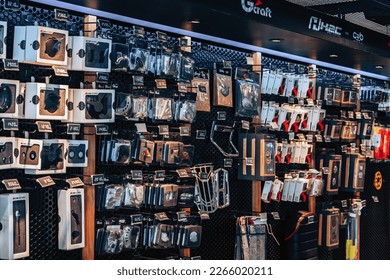Leading MX Gear NZ: Get Ready for Your Following Off-Road Journey
Leading MX Gear NZ: Get Ready for Your Following Off-Road Journey
Blog Article
A Detailed Check Out Motorcycle Components: What Every Rider Needs To Know
An extensive understanding of bike parts is not just useful but crucial for any kind of motorcyclist intending to maximize efficiency and safety. Each element, from the engine's intricate workings to the dependability of brake systems, plays a pivotal duty in the general experience and capability of the bike.
Understanding the Engine
The engine, commonly regarded as the heart of a bike, is an intricate setting up of components that function in consistency to transform gas into movement. At its core, the engine's key function includes the burning process, where air and gas mix and stir up within the cyndrical tubes, causing regulated explosions that drive the pistons. These pistons go up and down, converting chemical energy right into mechanical power, which consequently turns the crankshaft, ultimately powering the bike.

Comprehending the complexities of a bike engine is important for riders and fanatics alike. It not only gives understanding into just how bikes attain their excellent power and rate but also aids in effective maintenance and troubleshooting, making certain durability and reliability when driving.
Suspension Equipments
While the engine powers the motorbike, the suspension system plays an important duty in guaranteeing a controlled and smooth ride. The suspension system is accountable for soaking up shocks from the road surface, maintaining tire call, and providing stability throughout cornering and braking. It consists of 2 main components: the front forks and the back shock absorbers.
Front forks are normally telescopic, including a springtime and moistening mechanism. The spring prolongs and presses to take in bumps, while the dampening mechanism controls the motion to stop excessive jumping. This combination guarantees the front wheel remains touching the road, offering superior handling and convenience.
The back suspension, normally a monoshock or twin-shock configuration, functions similarly to the front suspension but is tailored to sustain the bike's weight and biker - motox parts nz. It handles rear wheel movement, adding to the bike's total equilibrium and responsiveness
Suspension systems can be flexible, enabling cyclists to make improvements preload, compression, and rebound settings according to personal choices and riding conditions. This adjustability improves efficiency by maximizing the motorbike's interaction with varied terrains. In summary, an effective shock absorber is important for biker convenience, safety, and the motorbike's managing prowess.
Brake Components
Stopping power is an essential aspect of bike safety and security, and it depends upon the performance of the brake components. The key elements of a motorbike's stopping system consist of the brake pads, calipers, blades, and master cyndrical tube. mx gear nz. Each of these parts plays an click for more info essential role in guaranteeing effective braking performance
Brake pads are essential as they develop the needed rubbing against the blades to decrease or stop the bike. Built from products such as sintered metal or natural compounds, the selection of brake pad product significantly influences efficiency and long life. Calipers, housing the brake pads, apply pressure to the pads when the brake bar is engaged, helping with contact with the rotors.
The blades, typically made from stainless-steel or actors iron, are mounted to the wheels and work as the surface area versus which the brake pads press. Their design, consisting of size and thickness, influences heat dissipation and quiting power. The master cylinder, linked to the brake lever, produces hydraulic pressure sent via brake lines to the calipers, guaranteeing constant braking pressure.
Regular maintenance and assessment of these parts are crucial for optimum efficiency, stopping wear and making certain motorcyclist safety when driving.
Tire Basics
Beyond keeping durable stopping systems, making sure optimum tire efficiency is equally significant for motorbike safety and security and effectiveness. Tires are the single call factor between the motorcycle and the road, making their condition pivotal in taking care of, stability, and overall ride top quality. Picking the ideal tire kind is essential, as it directly influences traction and performance. Choices range from touring to sporting activity tires, each developed to suit particular riding problems and styles.

Examine the sidewall for the DOT (Department of Transportation) code to determine the tire's age. Investing focus in these tire basics not just optimizes efficiency however likewise substantially boosts riding security.
Electric Equipments
In the world of motorbike upkeep, the electrical system plays a critical function in making sure trusted performance and cyclist safety and security. This intricate network encompasses crucial parts such as the battery, generator, starter motor, and wiring harness. Each aspect is essential for the smooth operation of the motorcycle, from ignition to illumination and communication with different sensing units.
The battery works as the heart of the electric system, offering the necessary power to start the engine and operate accessories. Regularly checking the battery's voltage and terminals for rust is essential to stop unforeseen failures. The generator, on the other hand, charges the battery while the engine is running, making certain a continual power supply.
To keep it, motorcyclists should pay focus to any unusual sounds or difficulties throughout start-up. Ensuring that the wires are free and intact from damages is essential for guaranteeing and protecting against short circuits functionality.
Final Thought

Quiting power is an essential aspect of bike security, and it hinges on the effectiveness of the brake parts. The key elements of a motorbike's stopping system include the brake pads, calipers, blades, and master cyndrical tube.Brake pads are necessary as they create the needed friction versus the blades to slow down or quit the motorbike.Beyond maintaining durable braking systems, making certain ideal tire performance is similarly significant for bike security and performance.In the realm of bike maintenance, the electric system plays a critical duty in guaranteeing trusted efficiency and cyclist security.
Report this page